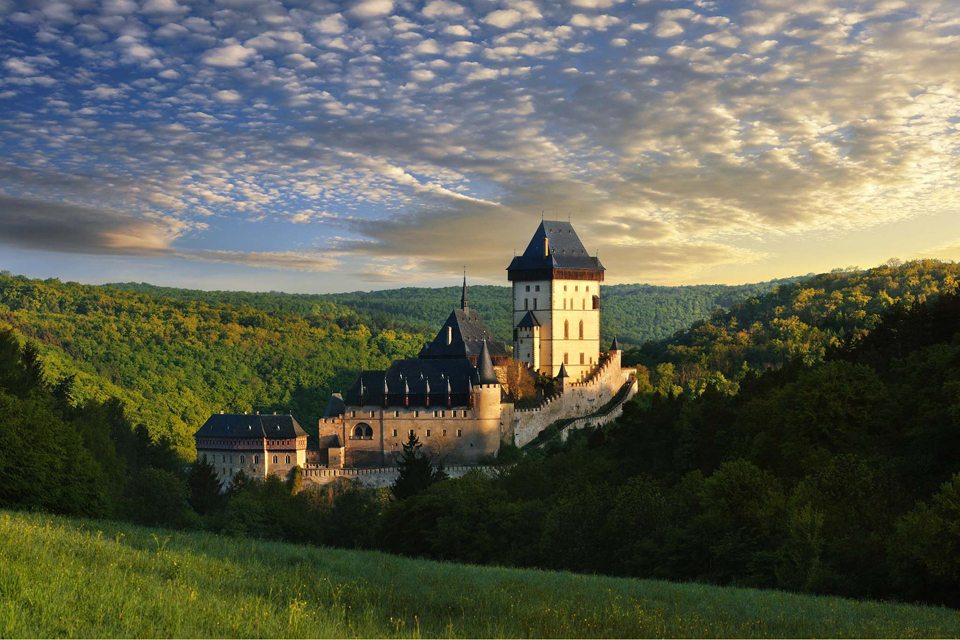Karlstejn is a remarkable witness to the creative energy of Charles IV, king of Bohema and Holy Roman Emperor 1316 – 1378
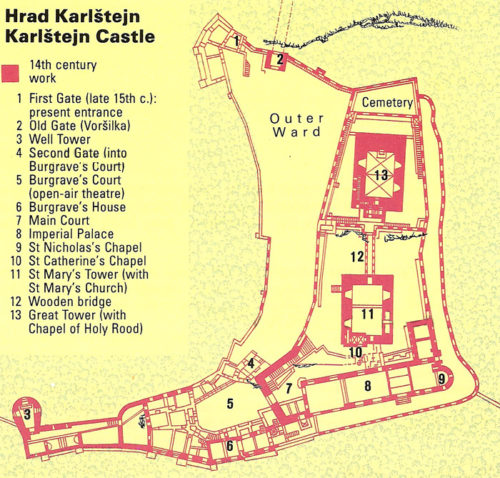 The castle of Karlstejn is one of the most evocative remnants from the the time of Charles IV. Most medieval castles have a long history. However, this castle was uniquely a whole new construction, founded in 1348 (immediately after Charles had been crowned king of Bohemia. The building project was directed by the later later Karlstejn burgrave Vitus of Bítov, but it is obvious the emperor personally supervised the project in its details. Who the architect was has nevertheless never been answered satisfactorily and in general it is believed that the function was filled with a master-craftsman rather than an architect in our sense. It took twenty years to finish the castle until the final inner decoration of the Chapel of the Holy Cross was completed and the chapel could be consecrated (1365). Later, it underwent several reconstructions – a late Gothic intervention in 1480 and a Renaissance redesign around 1575. Finally, in 1887 Josef Mocker carried a triumphant neo-gothic reconstruction out basically leaving us with the castle as it looks now. A remarkable feature, though, is the relative untouched character of the unique wall decorations in the chapels as well as elsewhere. Another important feature is the inventive use of the shifting plateaus of the ground.
The castle of Karlstejn is one of the most evocative remnants from the the time of Charles IV. Most medieval castles have a long history. However, this castle was uniquely a whole new construction, founded in 1348 (immediately after Charles had been crowned king of Bohemia. The building project was directed by the later later Karlstejn burgrave Vitus of Bítov, but it is obvious the emperor personally supervised the project in its details. Who the architect was has nevertheless never been answered satisfactorily and in general it is believed that the function was filled with a master-craftsman rather than an architect in our sense. It took twenty years to finish the castle until the final inner decoration of the Chapel of the Holy Cross was completed and the chapel could be consecrated (1365). Later, it underwent several reconstructions – a late Gothic intervention in 1480 and a Renaissance redesign around 1575. Finally, in 1887 Josef Mocker carried a triumphant neo-gothic reconstruction out basically leaving us with the castle as it looks now. A remarkable feature, though, is the relative untouched character of the unique wall decorations in the chapels as well as elsewhere. Another important feature is the inventive use of the shifting plateaus of the ground.
Ground Plan
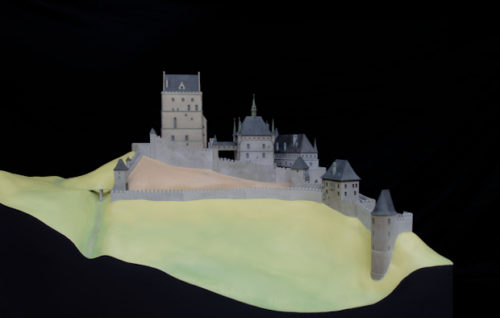
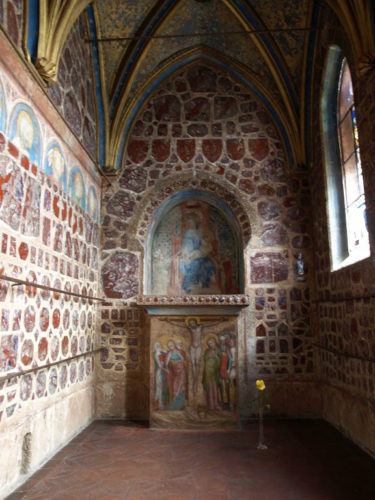
The castle stands on a limestone outcrop beside the river Berounka on the south side of the Kněží hora hill, app. 30 km south west of Prague. Visitors enter the castle through the first gate, a square two-storey tower, above a moat to the north. From here there is access to the outer ward, which has to be traversed in order to enter through the second gate, which leads to the Burgrave’s house. Drawbridges closed both these entrances. To the back of this courtyard was the well-tower, which Charles had to import miners from Kutna Hora to have constructed. In front of this was the Burgrave’ s court from where yet another port led into the main court.
Here was the entrance to the imperial palace with the small chapel of St. Nicolas at the end. The palace is by all accounts small, measuring 12.5 metres x 46 metres and with a cellar and four floors. The measurements are nearly equivalent to those of the new palace in the Castle in Prague. At the ground floor was the hall; this is currently being used as an exhibition space. Second floor consisted of three rooms of which the knights’ hall was the largest. This was covered in a series of life-size portraits of the ancestors of Charles IV. The private apartment of Charles IV on the second floor was divided into four rooms with the bedroom to the east, then an audience room, followed by the stateroom used for formal meetings and dinners with gardarobes in the back. Finally, the third floor was reserved for the queen and her female retinue.
From the inner courtyard it was possible for ordinary people to access the next terrace, on which stood the Marian Tower, wherein was the Church of St. Mary and the private chapel of the emperor, the St. Catherine’s Chapel; the emperor had access to this across a connecting walkway from his private apartment. This chapel was decorated with polished stones set in the rough wall. From here a portal led into the church with the famous paintings of Charles receiving and depositing relics.
Chapel of the Holy Cross

In all the world there no castle or chapel is so precious and meritorious, for there [the emperor] has deposited the imperial insignia and the treasure of all his kingdom
(Beneš Krabice of Weitmile: Cronica Ecclesia Pragensis – own translation)
Finally on the last terrace stood the Great Tower which held the Chapel of the Holy Cross. This was protected by an extra layer of thick walls. Behind four doors with nineteen locks Charles kept his state archive there as well as his most important treasure, the imperial regalia. Later, after his death the Czech royal insignia were transferred here.
The chapel has two fields of cross vaulting and is neatly divided into a “nave” and “chancel” by a high gilded screen inset with precious stones. The vaults are covered in gilded stucco with round glass inserts, imaging the starry heavens. The lower parts of the walls and the deep window recesses mirror those in the St. Wencelas Chapel in St. Vitus in Prague. They are covered with irregular slabs of polished jasper and amethyst with the grouts sheathed in strips of gold. The rest is covered by one of the great national treasures or Czechia, 129 paintings carried out by the court artist of Charles IV, Master Theodoricus. On the west wall of the nave are hung the holy bishops and abbots as well as the holy rulers, which Charles felt personally and dynastically affiliated with – Charlemagne, Henry II etc. Other walls are covered with paintings of the apostles, saints, prophets and angels. Her is the whole army of Heaven lined up to protect the innermost heart of the realm of Charles IV and all his most precious treasures.


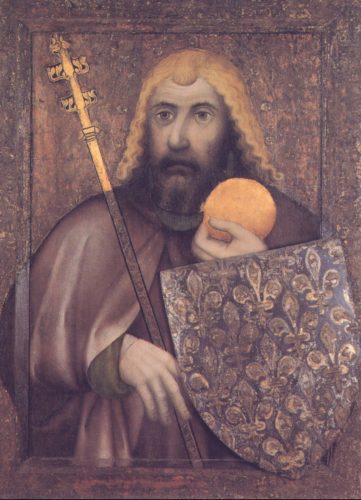
Visit
Karlstejn is on the UNESCO tentative list
READ:
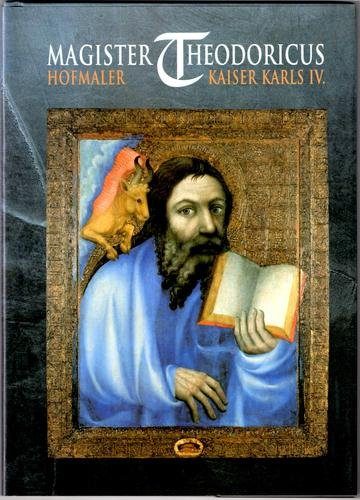 Magister Theodoricus, court painter to Emperor Charles IV: the pictorial decoration of the shrines at Karlstejn Castle
Magister Theodoricus, court painter to Emperor Charles IV: the pictorial decoration of the shrines at Karlstejn Castle
Ed. by Jiří Fajt
National Gallery of Prague 1998
READ MORE:
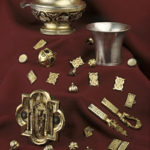 The Karlstejn Treasure – an exhibition 2016
The Karlstejn Treasure – an exhibition 2016
FEATURED PHOTO:
Karlštejn Castle. Source: Prague Sightseeing Tours
